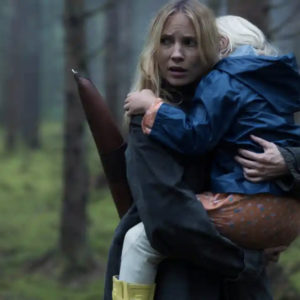For Yale School of Architecture’s Paprika, April 2017
Like other exported Swedish crime dramas, “Jordskott” has its fair share of sublime morbidity. I haven’t finished the series, so I will betray here only a partial spoiler. Like other Swedish crime dramas, this one follows a sharp, socially awkward, beautiful, and preternaturally tough protagonist. The plot focuses on Eva’s return to her hometown Silverhöjd, which is being strangled by the forest. She learns that ingesting a nasty-looking parasite can save your life in Silverhöjd and even clean up a rash on your supermodel-proportioned forearm.
A mirrored society of non-humans haunts Eva’s hometown. These other creatures are of the forest while the humans are of the town once built with wood fairly harvested from the forest. There once existed a symbiosis between the two societies (town and forest). But then Silverhöjd’s industrialists became stricken with capitalist greed for more forest access, which led to a xenocide campaign to clear out the resisting forest people.
At great risk, police officers, miscreant children, and loggers enter the contentious forest. Its cushiony floor is blanketed in a disarming misty green. But that’s a ruse. Festering heaps of organic rot conceal chutes to caverns below where shadow people mix potions to kill some people and heal others. The protagonist probes this underground, searching for clues about an aboveground epidemic of throat-slittings and kidnappings. She becomes entwined in a forest resounding with darkness, decay, transgression, and most of all, pending environmental catastrophe.
